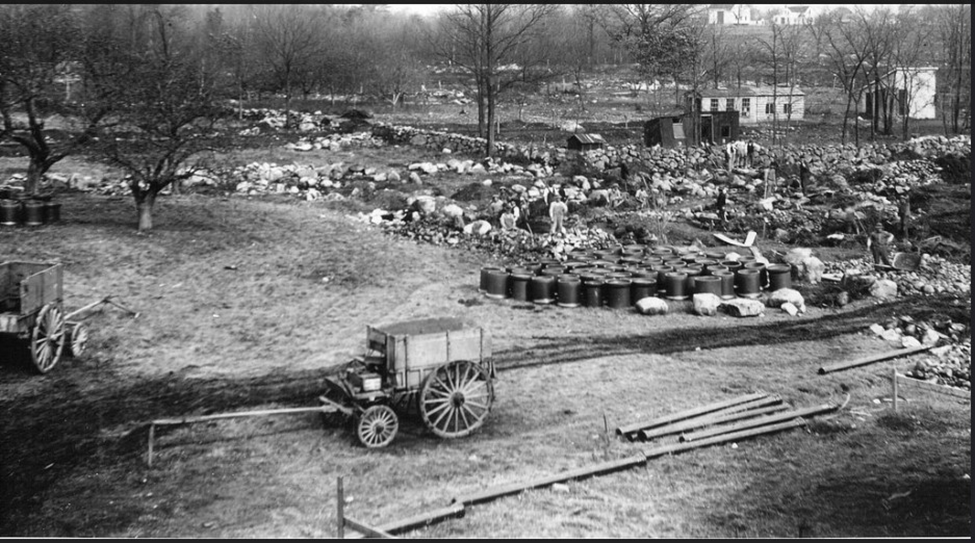|
On Sunday November 12, visitors to the EHS&M heard from six speakers. Ken and Diane Sterling, members of the SAR and the DAR, respectively, spoke of their own long family histories in this country from the time of the Revolutionary War. David Ames Jr. spoke about his relative Second Lt Oliver Ames, Jr. who was killed in combat in France in WWI and his own father David Ames, Sr, who proudly served in WWII, decoding the tapes that detailed losses at Pearl Harbor and accompanying the ranking admiral on duty in delivering the news to the White House. Easton resident John Amorim shared his experience in Vietnam after he enlisted in 1963, the constant need to be on the lookout for booby traps, and his sadness on hearing of the death of fellow Easton resident and OA grad Pfc Edward Smith. Frederick Allen Coe Jr.’s military duties included combat force protection and electronic security systems operations in both Afghanistan and Iraq. Since September 11, 2001 he has been deployed on three military operations, including OPERATION ENDURING FREEDOM and OPERATION IRAQI FREEDOM. Left to right: First Vice President David Ames Jr., John Amorim, Elizabeth Riley, Frederick Coe, Jr.
Elizabeth M. Riley, Lieutenant Colonel (Ret), served in the US Army from 1984 to 2013; her specialty was logistics, plans, operations and training. Her career included assignments in the Army National Guard, Army Reserves, and active duty. Listeners were impressed with the selfless service given by these individuals and the gift of those who solemnly pass their story on. At this time we especially remember those who did not return. I find myself sympathizing with the words of Emily Dickinson, It feels a shame to be Alive-- When Men so brave—are dead-- Anne Wooster Drury [email protected]
0 Comments
UPCOMING EVENT: Please join us! I found it! The Dailey Homestead on Stonehill College property. I mentioned Dailey in an earlier newsletter about Stonehill; Dailey was an early settler in Easton. “John Dailey (Daley/Dayly) ‘pitched’12 acres (1708-9) on Stone-House Plain.” He was here before 1708 and originally a native of the north of Ireland. (Chaffin) He was a hogreeve, or hog constable. After reading, or re-reading, about the find, and subsequent research and excavation beginning in 1996, I wanted to see the site for myself. Of course, I did it the hard way- I did not go directly to the College archives. I had tips from three different people, and off and on, over the past several months, I have wandered the vicinity looking for the site. It was not easy to find. There is a path, though a rather faint one off a more well-traveled path, and the site is marked- once you manage to find it. Artifacts are stored in the Stonehill College Archives. Sign posted near Dailey homesite on Stonehill College property. Found at the site were a bronze coin with a likeness of George II, a musket ball, pieces of window glass, china imported from England and China, and part of a tobacco pipe. Artifacts are stored in the Stonehill College Archives. Remains of a well at Dailey site near house foundation. Photo of Dailey house foundation.
The woods were quiet and calm the day I found the site, the sun shining through the leaves of the surrounding trees, the occasional brown leaf silently drifting down to the ground. It was a good moment to reflect on the past and try to imagine what life was like for John Dailey and his family. It was worth the hours spent searching. The photos are mine, but some information is from the Stonehill Alumni Magazine, Fall 1999. Anne Wooster Drury [email protected] |
Author
Anne Wooster Drury Archives
June 2024
Categories |
Easton Historical Society and Museum
PO Box 3
80 Mechanic Street
North Easton, MA 02356
Tel: 508-238-7774
[email protected]





